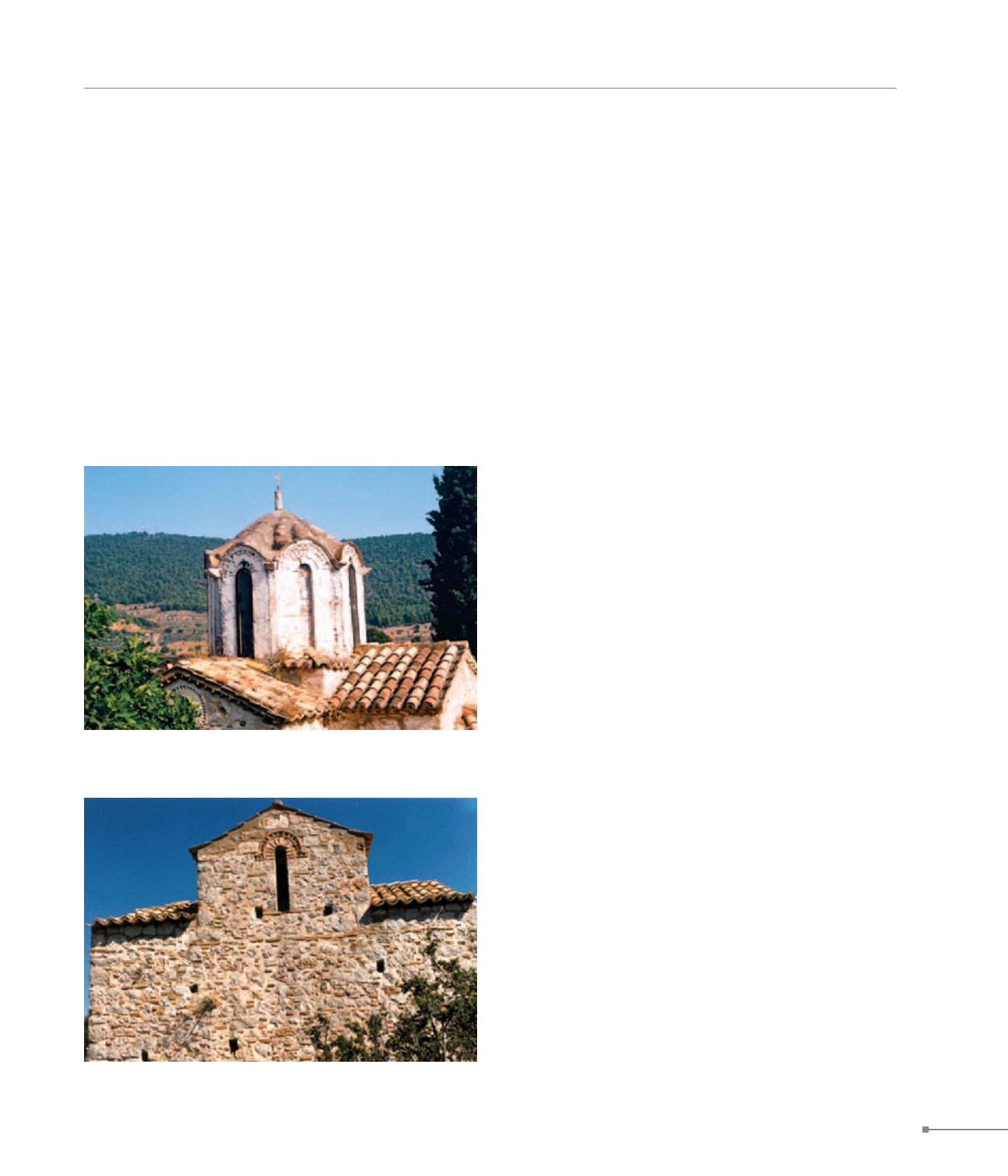
Hexamilion.
Sophiko.
PELOPONNESE
215
269. Sophiko, Aghia Triada (Σοφικό, Αγία Τριάδα)
269. Sophiko, Koimisis of the Theotokos monastery (Σοφικό, μονή
Κοίμησης της Θεοτόκου)
267.
Hexamilion.
The Hexamilion wall, across the Isthmus of Corinth, was a large-
scale defensive project for the fortification of the Peloponnese
peninsula against barbarian raids. It extended 7,500 m approxi-
mately from the Corinthian to the Saronic Gulfs; it was 3 m thick
and about 8 m high. At intervals it was reinforced with towers,
while, close to the sanctuary of Poseidon at Isthmia, there was
an annexed fort. The wall was constructed in the 5th c., under
Theodosius II (r. 408-450), and was rebuilt in the 6th c. by Jus-
tinian I (r. 527-565). In 1415 Emperor Manuel II Palaeologus (r.
1391-1425) reconstructed the wall, which was the main obsta-
cle to constant raids by the Turks until circa the mid-15th c. A
well-preserved part of the Hexamilion wall at the “Galota” Kyras
Vrysi site, below the new Athens-Corinth highway, has been
opened to the public.
268
. Kenchries.
Kenchries is the E harbour of Corinth on the Saronic Gulf. It
reached its peak in the Late Roman period, with the temple of
Isis distinctive among other structures. A series of glass panes
in opus sectile, of Egyptian origin, were intended for the deco-
ration of the temple, but were not ultimately used as their store-
house was destroyed by earthquake circa 375 AD. It was from
Kenchries that Apostle Paul set sail for Ephesus. Near the tem-
ple was subsequently constructed a five-aisled basilica, which
was destroyed by earthquake in 552. In the 7th c. this church
was restricted to the nave. Coin hoards dating from 580-90 have
been found near the basilica. The harbour, whose facilities are
today underwater, continued in use until the early 15th c. and
it was here that Manuel II Palaeologus disembarked during the
construction of the Hexamilion wall.
269.
Sophiko.
E of Sophiko survives a monastery catholicon dedicated to the
Koimesis of the Theotokos, a two-columned cross-in-square
church of the 12th c. The church of the Taxiarchs at the Larisi
site is of the same period and type. A short distance SE of this
is the cross-vaulted church of Aghia Triada with wall-paintings
from the first half of the 13th c. The aisleless, domed naiskos
of Hypapante lies to the E of Sophiko. It has earlier annexes
on its W and S sides and includes wall-paintings of the second
half of the 13th c. SE of the village stands the aisleless, domed
naiskos of Saint Anthony, whose constructional and morpho-
logical features possibly associate it with a local building crew
active in the area circa the mid-13th c. On the top of a naturally
protected hill, N of the village, remains have been discovered of
an installation, which is demarcated by a fortification wall whose
NW corner is occupied by a small fort. This installation dates
from the years of Frankish rule (13th c.).


